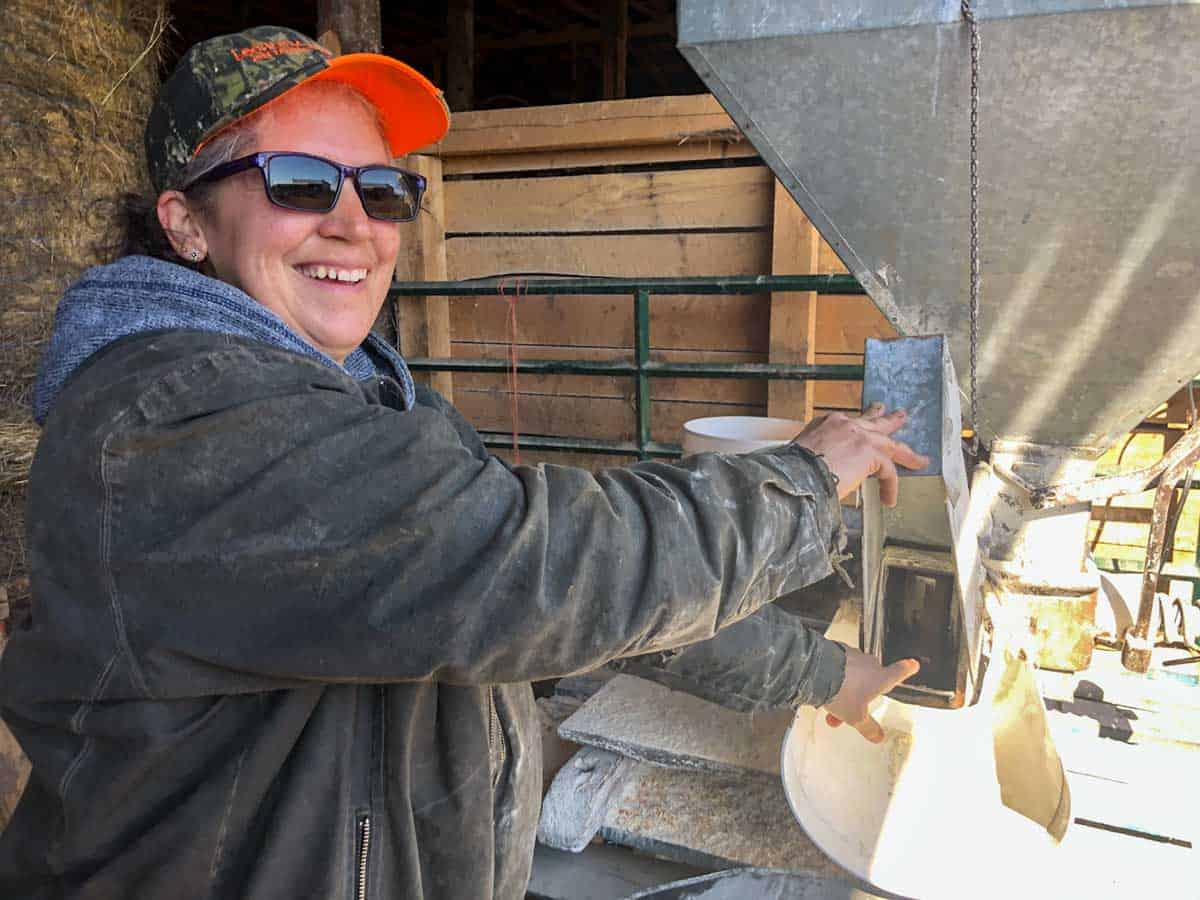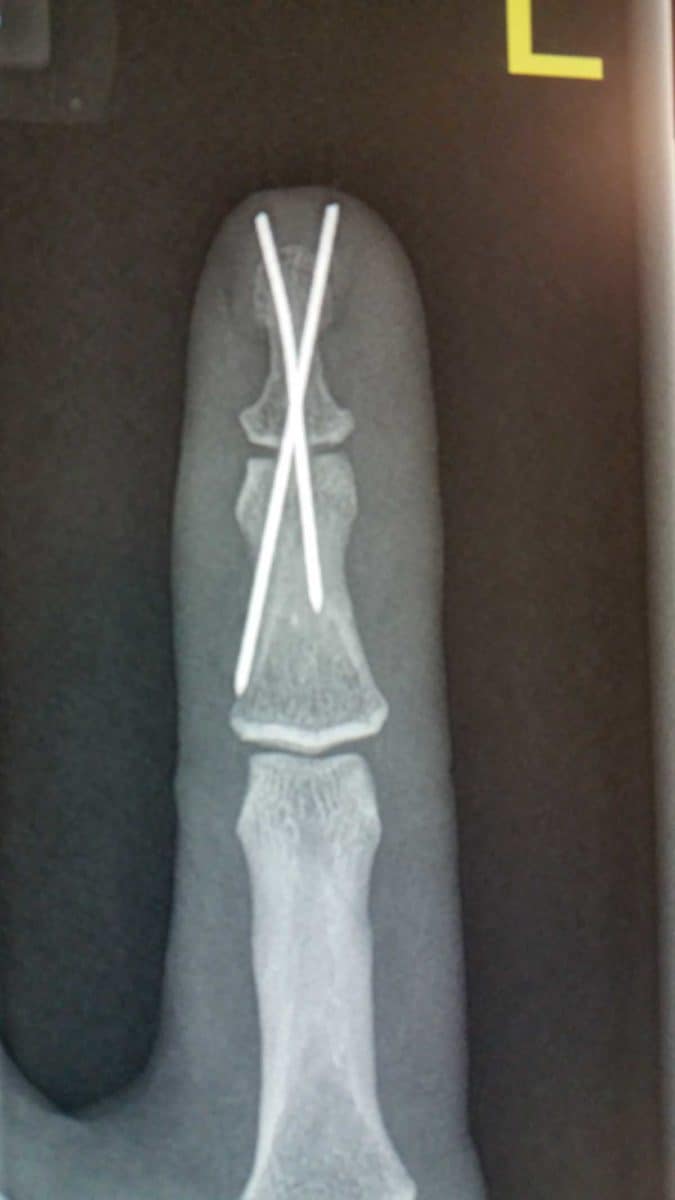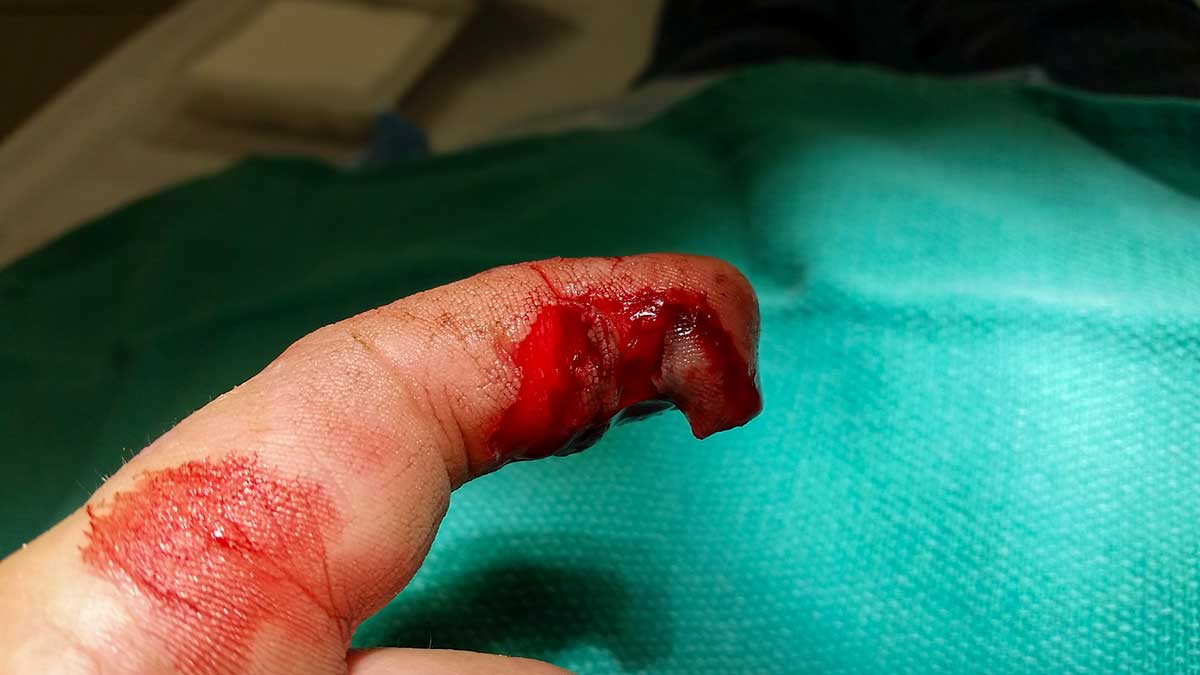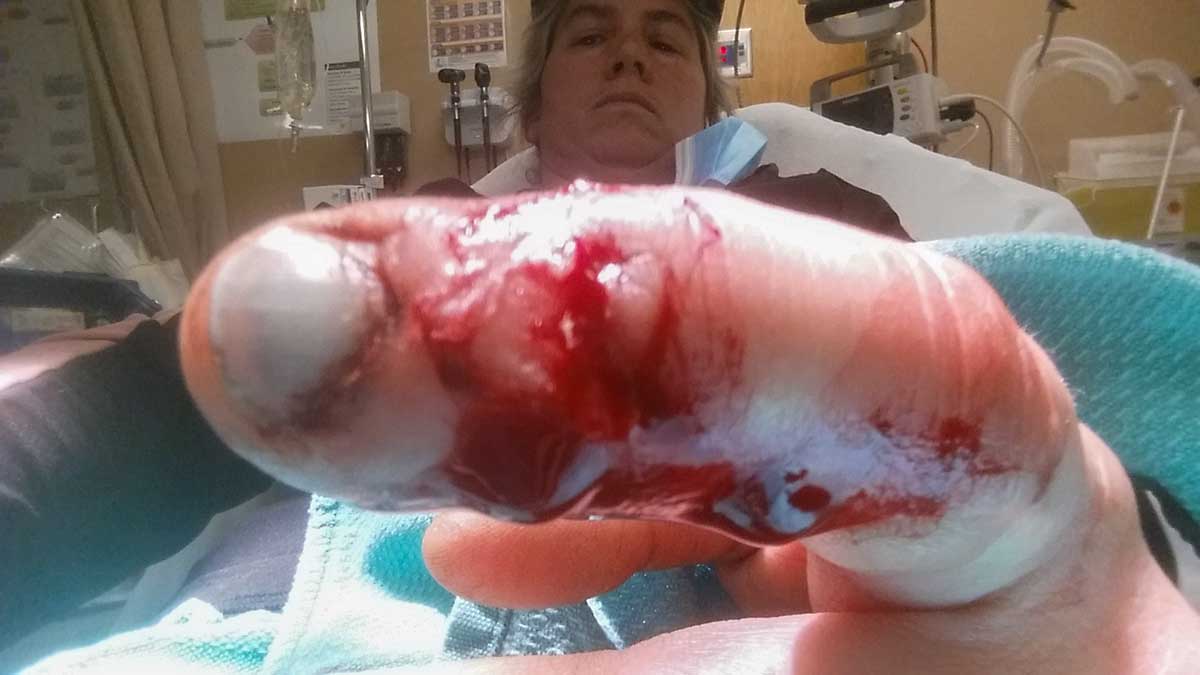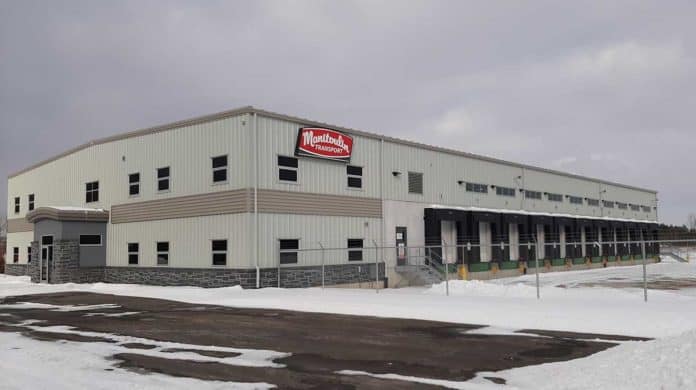Graphic Warning: This story contains a photo gallery with graphic images. Viewer discretion is advised.
GREEN BUSH – Lynn May is well aware of the many dangers that lurk on the farm and this Green Bush farmer, who is relatively new to the farming business, says she takes every scratch, scrape and bruise (and sometimes worse) as a learning opportunity and is constantly adapting her farming practices with safety top-of-mind.
Ms. May’s husband Gary had always farmed, but sold his beef operation off in 2005, but with pasture and barns sitting idle, the Mays decided to get back into farming and in 2007, Ms. May bought four head of her own—three Herefords and one Simmental—to add to the herd.
Today the Mays have 63 cows, but she admits she’d like to see that number hit 80. “I’m not sure what Gary would say about that,” Ms. May laughs.
“I absolutely love farming,” she smiles. “I wouldn’t trade it for anything.”
Ms. May grew up on a hobby farm, which included a couple of cows, goats, pigs and sheep, so working with farm animals wasn’t exactly new to her, but never on this kind of scale and while Mr. May plays an important role in the operation, the farm chores fall largely to Ms. May, who also drives school bus during the week. “If I can get the bulk of the chores done during the day, we can relax a bit in the evening,” she adds.
Ms. May says she’s learned the role of farmer largely through trial and error and a deep love for animals.
This January Ms. May had a major learning lesson when she almost lost the top of her finger to a corn grinder. On January 2, the farmer was pouring whole kernels into the grinder, which turns it into cracked corn. This is a special treat for the cows, and this was evident last week when Ms. May gave this reporter a tour of the farm, including the infamous grinder. When there’s cracked corn to be had, the cows follow Ms. May like a dog after a bone.
After a few bucketfuls of corn, the bottom of the grinder needs to be cleared of corn dust, especially in the winter when it could freeze and cause the grinder to jam. On that early January day, Ms. May unplugged the grinder, which takes some time to come to a complete stop. Ms. May didn’t wait for this to happen, put her hand in to clear the corn dust and immediately felt a pain in her finger. She explains that she pulled her hand from the grinder, instinctively cupped it with her other hand and ran to the house. She recalled her husband calling after her, “Do I need to look for parts!?”
“I don’t know!” she responded.
Ms. May says she thought the tip of her finger might be gone, and was relieved to find it was still there, if somewhat mangled.
She immediately put her “going to town boots” on (not to be confused with the everyday farm boots) and they headed to the emergency department at Manitoulin Health Centre where she learned she had severed the tendon that runs along the top joint of her finger. Ms. May saw a specialist in Sudbury on January 8 and on January 15 had two pins placed in her finger (which are due to come out on March 22).
Despite this, Ms. May still has a fondness for her corn grinder. “It’s an awesome piece of equipment.” And she says she will never, ever place her hand in it again until all the components come to a full and complete stop.
Last May, Ms. May also had a nasty accident that saw her down and out for two full weeks.
“I was moving cattle out to pasture,” she shares. “Unlike now, where we can separate the cows and the calves for loading, the cows and calves were together.”
Ms. May explains she had six calves in the chute ready for loading when a cow managed to get through and was heading straight for her. She says she tried to flatten herself as best she could against the side of the pen, but there was no time to scramble up and over. When the cow’s hips reached her, they crushed the farmer into the side of the chute and rolled her along as the cow pushed past. The sound of five ribs fracturing is one she will never forget.

Ms. May says she feels fortunate in that she didn’t receive a punctured lung or worse, but for those who know her, being idle for two weeks was incredibly tough for this hardworking woman who likes to keep busy.
“So, I taught myself how to make hats and dishcloths,” she grins, showing off some of her creations. “And I watched a lot of Dr. Pol (the National Geographic show about a country vet in Michigan who specializes in farm animals).” This Christmas, every child on her school bus route received a toque.
“It was just one of those ‘shit happens’ moments,” she shrugs.
The slats in the boards that make up the wooden chutes are now wide enough so that the Mays can get a big rubber boot between them to get up and over to safety if the need arises.
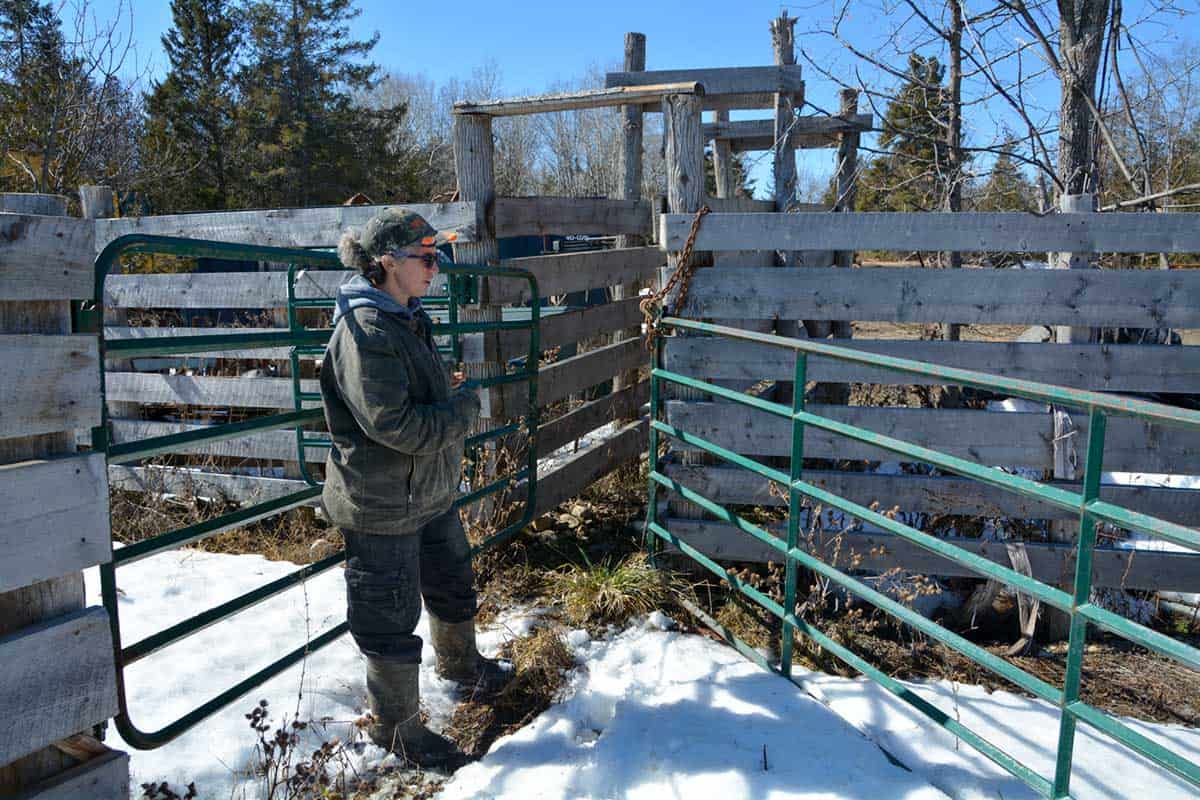
Ms. May has also had a couple of encounters with gates and has learned the hard way to never “touch a cow’s butt with the gate because they kick the gate and the gate kicks harder.” These gate encounters have resulted in chipped teeth, a swollen nose and seven stitches in the forehead.
Throughout the farm, in the barn and in and around the loading chutes, a series of double pens and gates that swing every which way allow for the Mays to cover all kinds of situations, such as separating cattle, or themselves, from the herd.
Ms. May admits to becoming much more cautious in all that she does and is getting better at reading the animals, knowing full well, though, that they are always full of surprises. She is also teaching herself to slow down.
“And if I think there’s going to be a situation, I wait for help,” she adds.
Ms. May has gotten into the good habit of sending a text to her husband or daughter before heading out to do something dangerous on her own, like loading cattle, then sending another one when the chore is done. If no one hears from her in an appropriate amount of time, they know to get worried.
Ms. May does find a little time to relax, too. Each summer since 2015, once the haying is done, the Mays head north to Longlac for a fishing getaway and a much-needed break at a friend’s tourist camp, Lochlomond Camp. Self-care is important for farmers, too.
“Farming is 24-hour, 365 day a year job, which I love,” the farmer adds, “between fencing, feeding, calving, haying, barn and yard cleaning, maintaining equipment, processing (tagging, pinching, needling), as well as the unplanned situations that tend to happen … I love it. It’s not work when you enjoy what you do and I absolutely love it.”
This time of year is especially rewarding for Ms. May when she gets to see the fruits of her labour—calves running and playing in the fresh springtime air.
“Lots of days, I feel Gary should have a reward as I can make farming pretty interesting,” she grins. “I am super lucky to have him by my side.”

